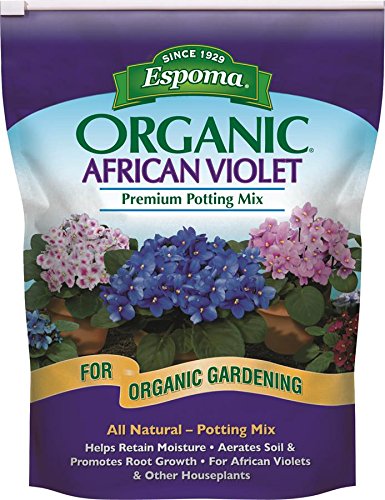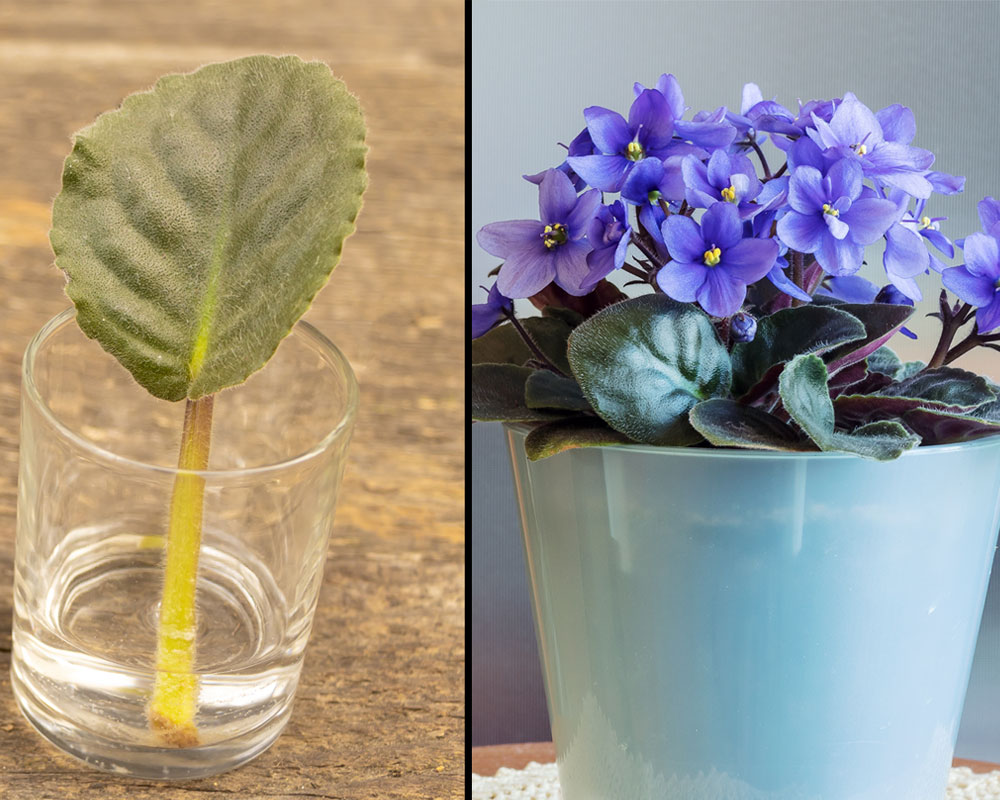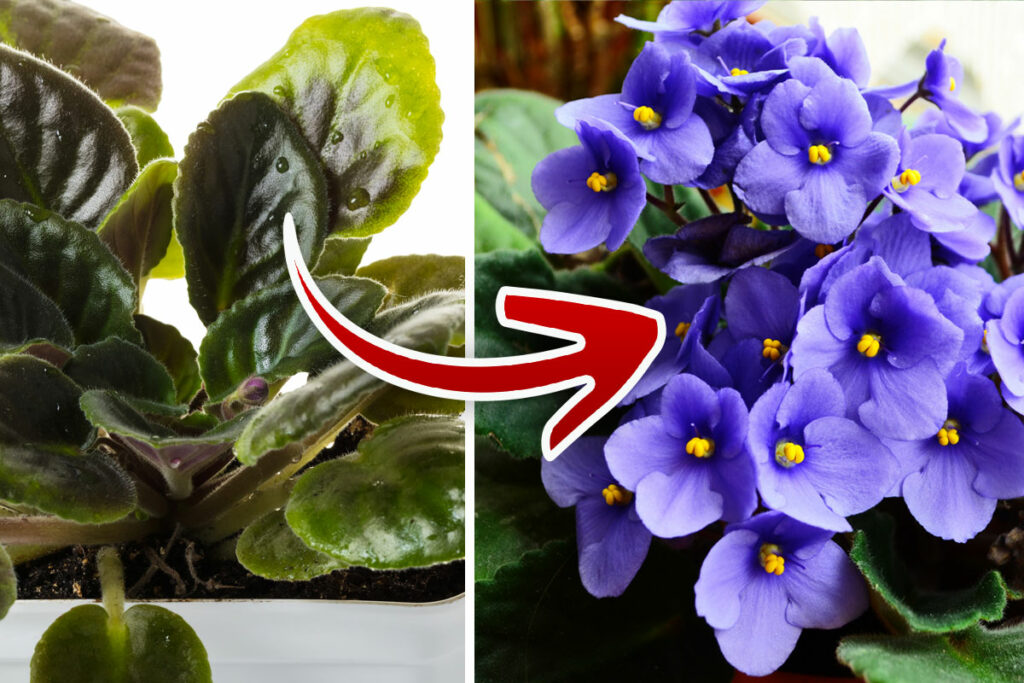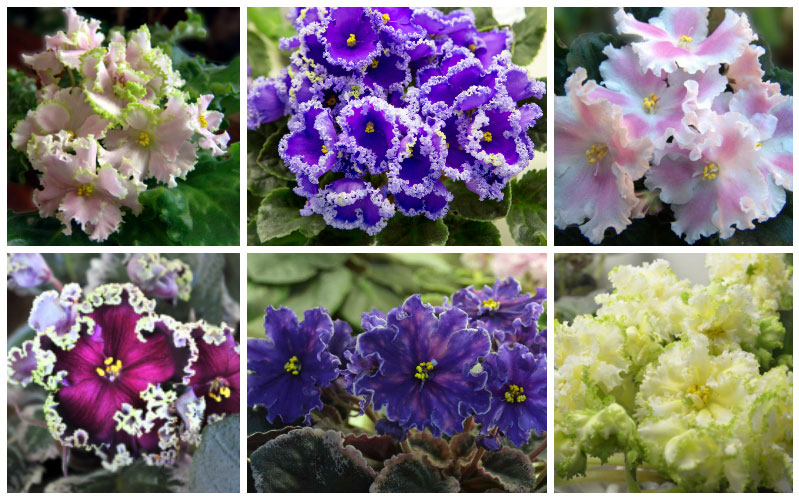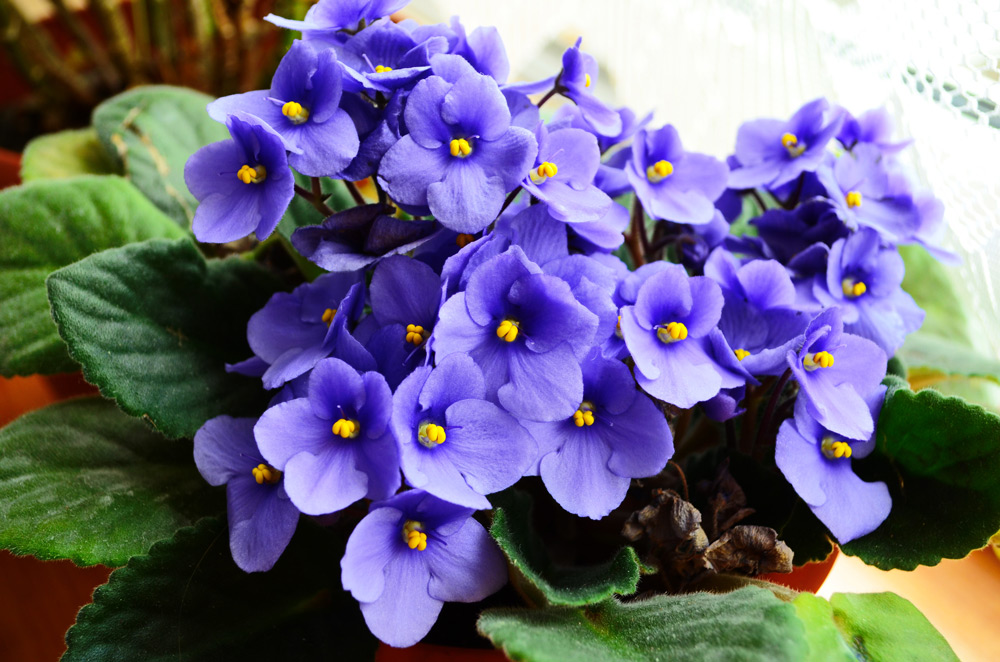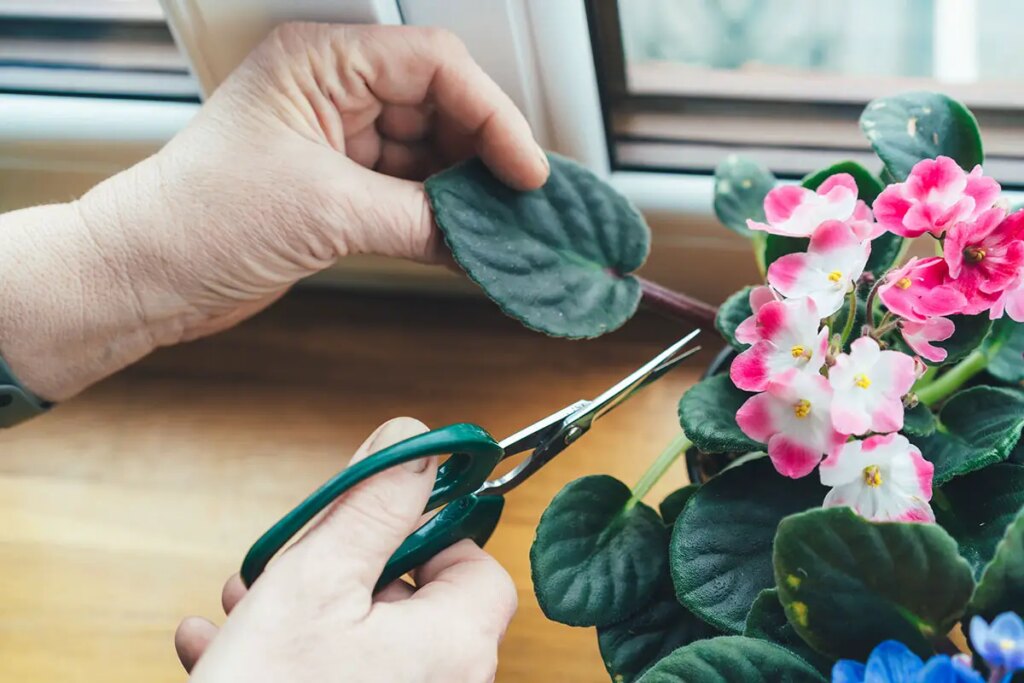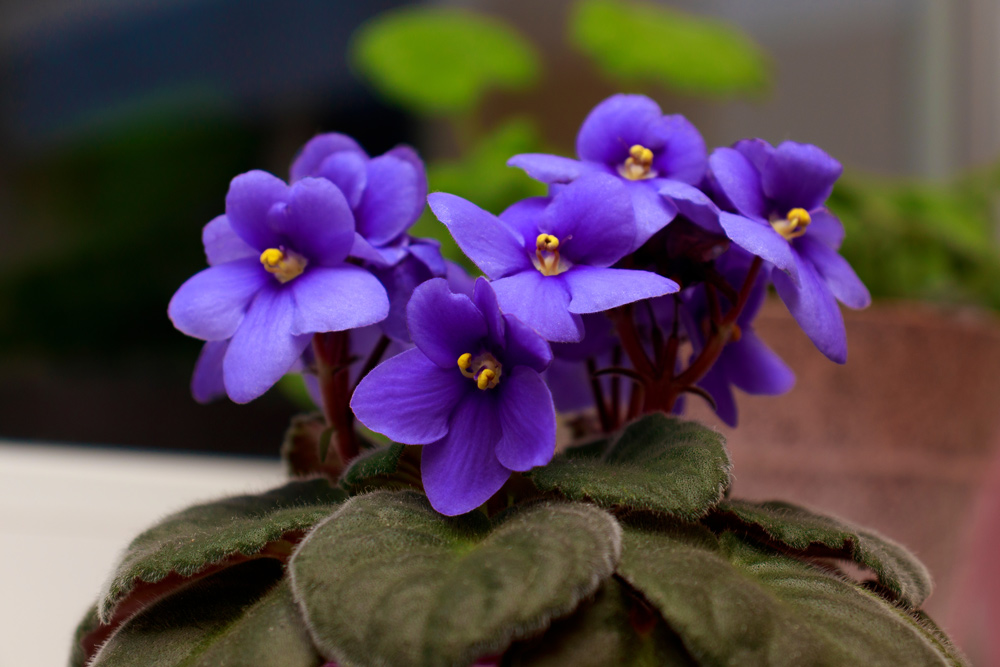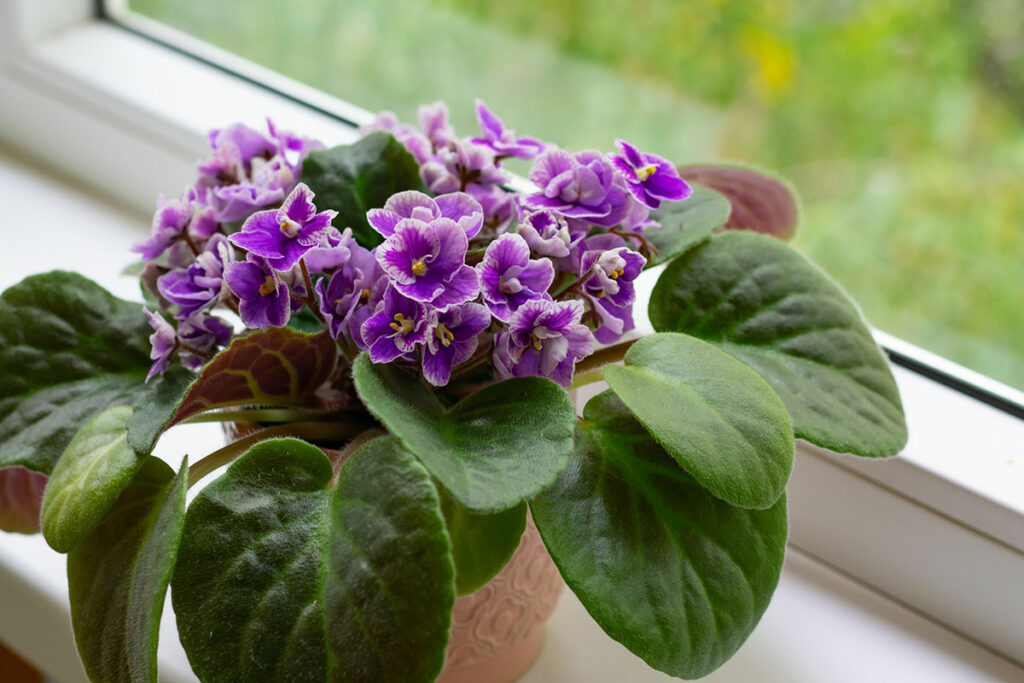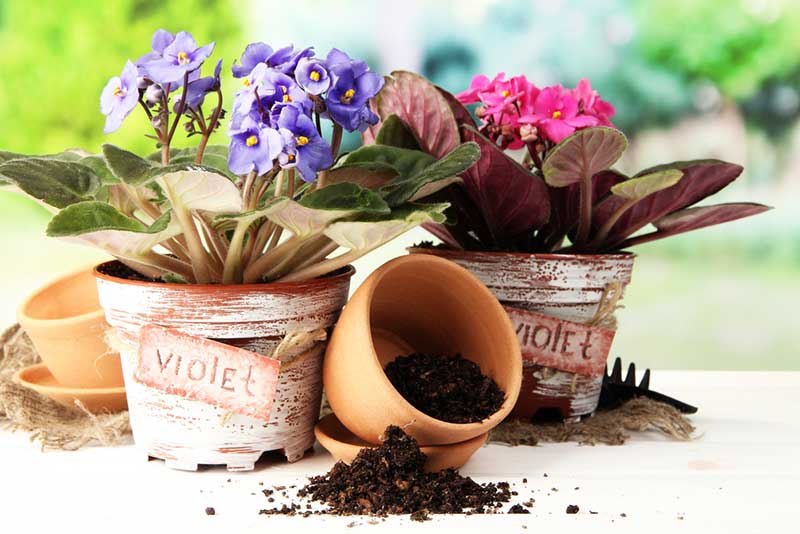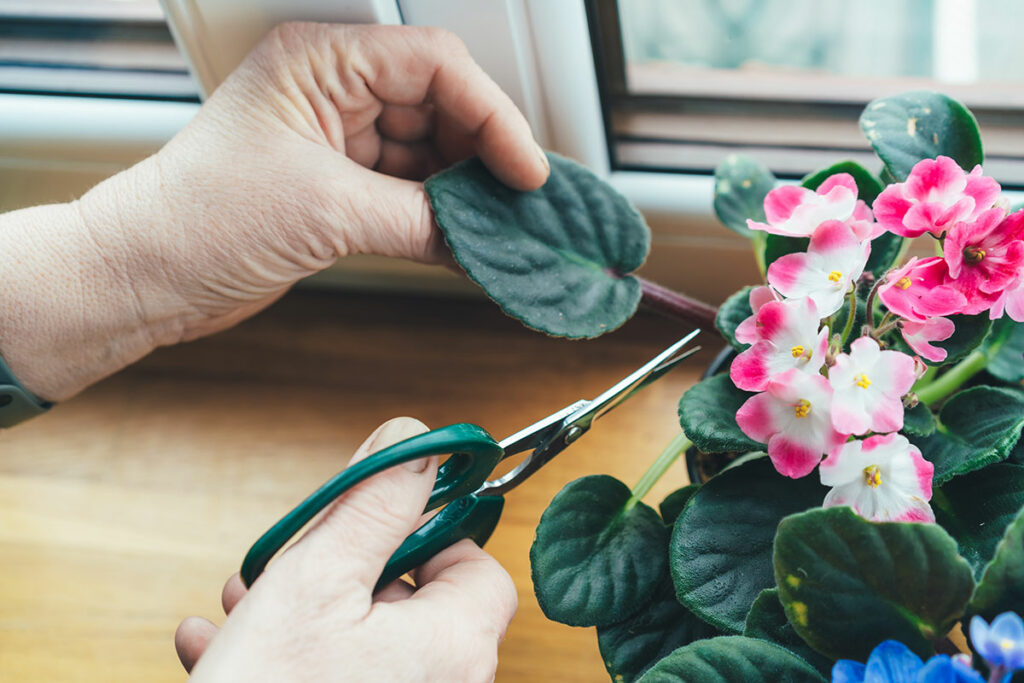With their wonderfully shaped fuzzy leaves, their compact structure and their bright, beautiful blooms, African Violets (Saintpaulia) have the kind of charm that cheers up the environment and makes you smile. If you are new to growing African violets at home or you just want to learn more about keeping them healthy and flourishing, here are some reliable tips.

1. Environment: African violets are meant to be grown indoors year round. Although some gardeners do take them outside when the temperatures are warm, they are susceptible to insect damage and will remain healthier and prettier when kept indoors.
2. Natural light: African violets require indirect light rather than direct sun, which can burn their leaves. They are perfect windowsill plants as long as there is lots of indirect sunlight for them to absorb. Windowsills that face east or west are the best locations for the plants which require 10-14 hours of light and eight hours of darkness a day for maximum blooms.
3. Water: There are many ideas about how to water African violets, but the basic guideline is to make sure the soil is kept moist to the touch, but never soaked or sodden. If you water by hand, try not to splash any water onto the leaves which will get spotty from water. You can water from the bottom up (letting the plant soak water up from a dish or saucer the pot has been placed in), which will help you avoid the spotted plant look.
4. Temperature: African violets are like a lot of people – they thrive in comfortable indoor temperatures that range from around 65 to 75 degrees Fahrenheit.
| Origin: | East Africa |
| Botanical Name: | Saintpaulia |
| Light: | Indirect light. East-or west-facing window is ideal. |
| Watering: | Medium |
| Soil: | African Violet Potting Mix |
| Temperature: | 65 to 75 degrees Fahrenheit |
| Height: | up to 6.9 inches |
| Spread: | up to 6.9 inches |
5. Humidity: African violets need a humid atmosphere, more humidity than is found in most homes. If you use the bottom-up watering system, then your African violet will already have the advantage of this method that creates humidity. Another good method is to keep the plants on dishes or trays of pebble that are kept moist.
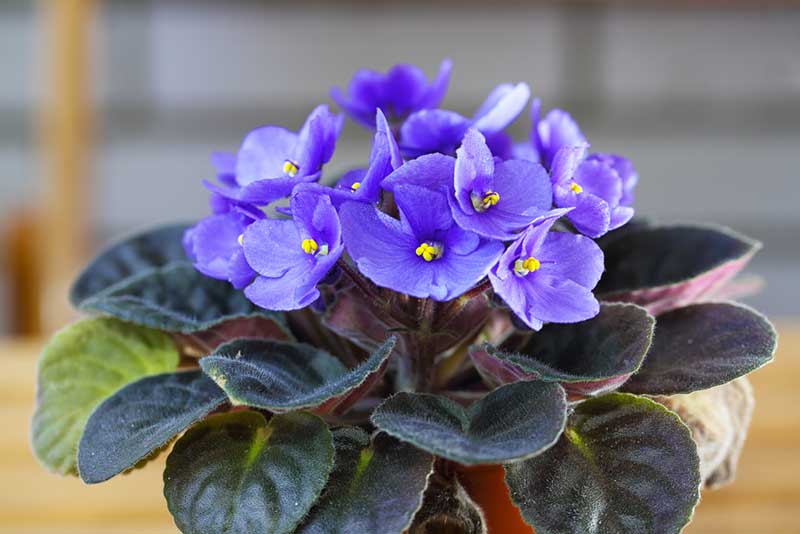
6. Choosing Your Plant: This is a matter of using the same common sense when you are picking out your African violet that you use choosing any plant for your home or garden. Pick out the healthiest looking plant, the one with the darkest green leaves and healthiest buds, and purchase your violets from a reputable grower or nursery. You can also check Amazon, there are tons of positive reviews from folks who purchase LIVE plants from Amazon.
7. Choosing Your Container: All potted plants should be planted in containers with adequate holes for drainage, and African violets are no exception. Proper drainage is essential in order to prevent root rot, so if you can’t live without a hole-less ceramic pot, put the plant in a plastic container with drainage holes and place that container inside the ceramic one. Remove the plastic pot from the ceramic one to water, and do not replace it until the excess water has drained off.
Bonus Tip: Use a Self Watering Planter (African Violet Self Watering System)
8. Soil: Again, drainage is very important in keeping your African violet healthy, so choose a commercial mix of sterile potting soil and perlite, If you need to re-pot, make sure to use sterile potting mix. In this guide, you’ll find more information on African Violet soil mix options.
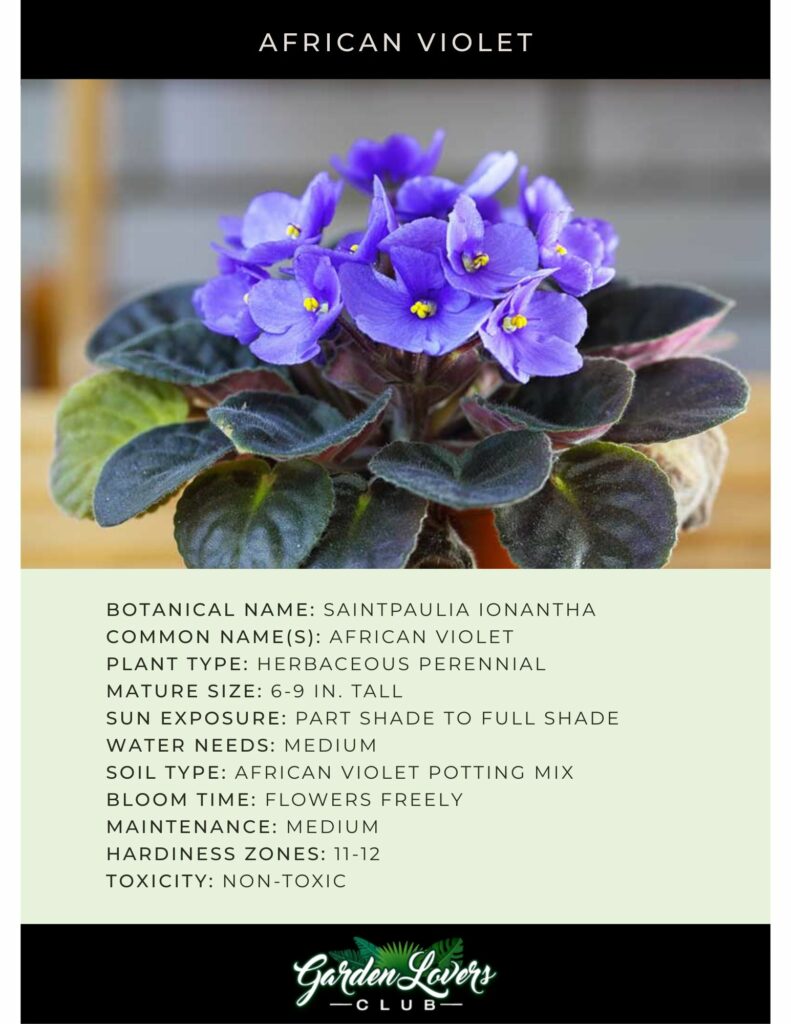
9. Feeding: African violets don’t require much fertilizer, and can suffer from over-fertilization; too much or too little fertilizer can result in lots of green leaves but very few flowers. If you see that your plant isn’t thriving or isn’t blooming very often, then use a fertilizer that is specifically made for African violets and don’t overdo it.

10. Propagation: African violets like to be a little root-bound in their pots, and this is when they will produce offspring that can become new plants. When you see new crowns have formed in the pot, remove the entire plant so you can gently separate the new growth and put it in its own container. You can also cut a leaf from the plant and root it in water, making sure that the water does not cover the leaf. A third way is to cut off a leaf with its stem attached, dip the stem into rooting hormone and then plant the dipped stem in a pot containing a sterile potting mixture.
Best Products for Maximum Blooms
Self Watering African Violet Planter
African Violets LOVE these pots! It’s difficult to find the right pots for bottom absorption watering. This one is perfect!
How the African Violet self-watering system works: The bottom of the pot is used for water storage. The watering system includes a basket where a cotton rope is used to automatically pull water up into the root ball as it’s needed. The bottom water reservoir can be filled and will last for several days without having to worry about watering your African Violet. This keeps your plant healthy and thriving. Check Price on Amazon

African Violet Organic Potting Mix
Your African Violets will thrive with this potting mix! Improves aeration and moisture retention. Promotes root growth. Perfect for African violets for a thriving plant. See it on Amazon
Get your African Violet Blooming With Schultz African Violet Plus
If your African Violet is not thriving, here is a special plant food for African Violets and other blooming plants. Just add 7 drops to every quart of water. You can purchase Schultz African Violet Plus Here
The gorgeous purple flowering African violet is a plant that is familiar to most of us. But if you decide to explore this genus a little further, you’ll discover a variety of flower colors and color combinations; single or double blooms; smooth, wavy or variegated leaves, miniatures and trailing varieties – there’s something to please any indoor gardener.
Related Articles:


